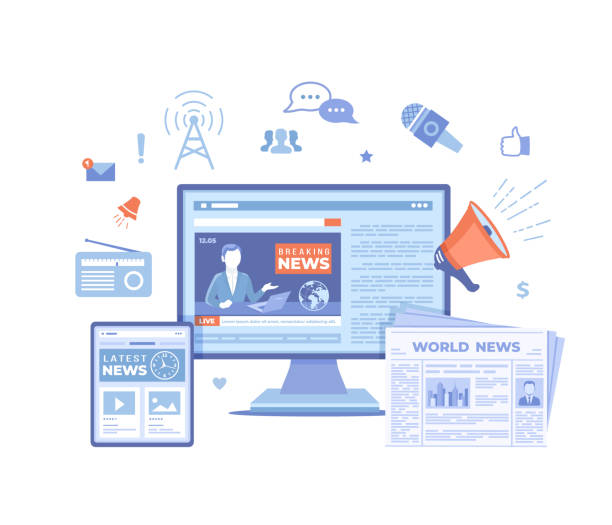One of my favorite things to read on how Media Houses are evolving is the New York Times: 2020 Report. It is a very vital read for anyone working in the Media today.
The report generated huge interest and comments online. With Joshua Benton, editor of the Nieman Journalism Lab at Harvard, calling it “one of the most remarkable documents I’ve seen” in his years running the Lab. It is a must-read for every business development and marketing personnel.
The document made me reflect on the digital strategies (or lack of it) of Nigeria media houses and, I am unhappy to say, the prognosis is not good for them. In other words, all Nigeria media houses are on a destructive trajectory. That is if they do not change course.
Darwinism And The Inevitable Death Of Nigeria Traditional Media Houses
Darwinism focuses on the evolution of species as caused by natural selection. It’s the idea that nature favors individuals of species that have certain traits which give them an advantage and helps them live better and longer in their environment/habitat. The other, less fortunate individuals have a harder time competing for resources and are therefore more likely to die off. In short, it’s the “survival of the fittest”.
Darwinism makes us understand that it’s not necessarily the strongest or the first to arrive who are most likely to survive; it’s the most adaptable who win in the end.
The same is true in business. In an era of Digital Darwinism, no business is too big to fail or too small to succeed. And in the media business, the existential threat is “adaptability to the digital age”
Below is an excerpt from an article I wrote on a similar theme four years ago Titled The Solution To The Dwindling Newspaper Circulation In Nigeria:
“……Such powerhouse newspapers as The New York Times, Washington Post, Chicago Tribune are also facing the same challenge of plummeting circulation figures. The difference is just that they are confronting the issue holistically rather than self-deceive themselves that all is well.”
What brought this social state? Mainly, the internet. Yes, the internet. Most of the newly empowered middle class have access to the internet and seriously, why should I buy a newspaper for information when the same is available on my blackberry free of charge? Moreover, the internet gives me access to different sources for the same information—all for free.
When I finished NYSC in 2005, my main source of information on job vacancies was Tuesday Guardian newspaper. And it wasn’t only me. All my freshly minted B.sc. friends consulted Tuesday guardian for employment opportunities. Fast forward five years to 2010 and what do you see? Nairaland, Naijahotjobs, NBF social website, Careers Nigeria, kerewa.com etc. These are free job listing websites where a job seeker will not only find vacancies but also tips on writing a CV, interview tips etc
If anything, the situation is graver (than it was four years ago) for Nigeria media houses:
• More of the traditional media audience has moved (and moving) online. With the proliferation of smartphones and the relatively wider reach and affordability of broadband internet access, more people (especially the young) are shifting their media consumption online
• The emergence of new and agile web-only media outfits. Three of the top five local media sites in Nigeria (Nairaland, Linda Ikeji, and Naij.com) are new digital-only outfits according to Alexa
• An exploding population of digital native
How Nigeria Media Outlets Are Currently Adapting
It is obvious that Nigeria traditional media houses are aware of some of these challenges and are taking actions to adapt to the reality:
1. They have built websites and are publishing digital versions of their content online.
2. Some more sophisticated ones have even gone ahead to build apps and toolbars which they actively promote
Unfortunately, they are tackling the issue in a wrong way and if they continue this way, their extinction will be inevitable. This is because the approach they have taken is at best cosmetic.
Strategic Approach To Digitalizing Of Nigeria Traditional Media
The first and most vital task before Nigeria traditional media houses is to evolve a digital strategy. That is the truly hard work. It starts by asking the bigger questions about your present and your future: What should you become; How must you change to achieve this goal of transformation.
For a newspaper like The Guardian, for example, The big question will be: How can The Guardian become more digital while still maintaining a print presence and, what has to change? That means aggressively questioning many of your print-based traditions and their demands on your time, and determining which can be abandoned to free up resources for digital work.
Without a strategic framework, digital success will be impossible. Actualizing this will be very difficult because it is almost certain that the only way to guarantee a long-term success is to have a paradigm shift in strategy to “digital first”. And this will have a whole lot of implications from hiring to resource allocation.
Some Salient Tips
After designing a well thought out strategy, below are some of the tactics Nigeria traditional media houses can employ to get to their publishing nirvana. Borrowing from the leaked Times Document, I will divide my recommendations into two broad parts: Audience Development and Newsroom Strengthening. The first is a core part of the newsroom team (journalists), while the other is a more broad effort that includes imperatives for business units and the newsroom alike.
Audience Development
1. Use big data to personalize – Data is king. Know as much about your audience as possible. This will aid personalization. For a start, you can start asking readers whether they would be willing to be contacted by reporters or if they are willing to share some basic information about their interest, alma mater and industry so you can send them content about those topics
On a more advanced level, you could create a section of the homepage that uses reader patterns to customize a list of content that readers missed but would most likely want to see. This means that though all readers would see the same top news stories, the other articles you show them would be customized to reflect what they haven’t seen (and would likely want to see based on the footprint they left earlier)
2. Content discovery and distribution are key– This is one area all Nigeria media houses fail woefully. In the digital age, it is not enough to have quality content, your content must be discoverable by its intended audience. This is a broad area that I cannot possibly cover in this post. But my suggestion will be that you must master two key areas (1) content promotion via social media and (2) SEO. Technical SEO hack like structured data/schema, sitemap, canonicalization etc can have a profound impact on your website discoverability
3. Motivate content engagement: There are so many ways to do this. All that is needed is creativity. For example, Linda Ikeji executed one of the most effective audience development campaigns I have seen out of Nigeria last December when she gave out one hundred thousand Naira each to ten of the most consistent commenter. The result on her blog is phenomenal
Newsroom Strengthening
1. You need new talents: You needs a broader array of digital talent, not just reporters and editors, but “technologists, user experience designers, product managers, data analysts, digital content strategists, and content creators–all working under people who have coherent goals
3. Leverage your biggest asset – content: In the digital space, content is king. The NYT document puts this best when it states “You have a huge advantage. You have a tremendous amount of high-quality content that you have a perpetual license to.”
While the focus of the newsroom may be on current events and stories, sometimes it’s important to provide context to what’s happening. And evergreen content can help do just that. So, resurfacing archival content will be great
3. Experiment more with the way you present content: You just must be willing to experiment more in terms of how you present your content: “We must push back against our perfectionist impulses. Though our journalism always needs to be polished, our other efforts can have some rough edges as we look for new ways to reach our readers”







